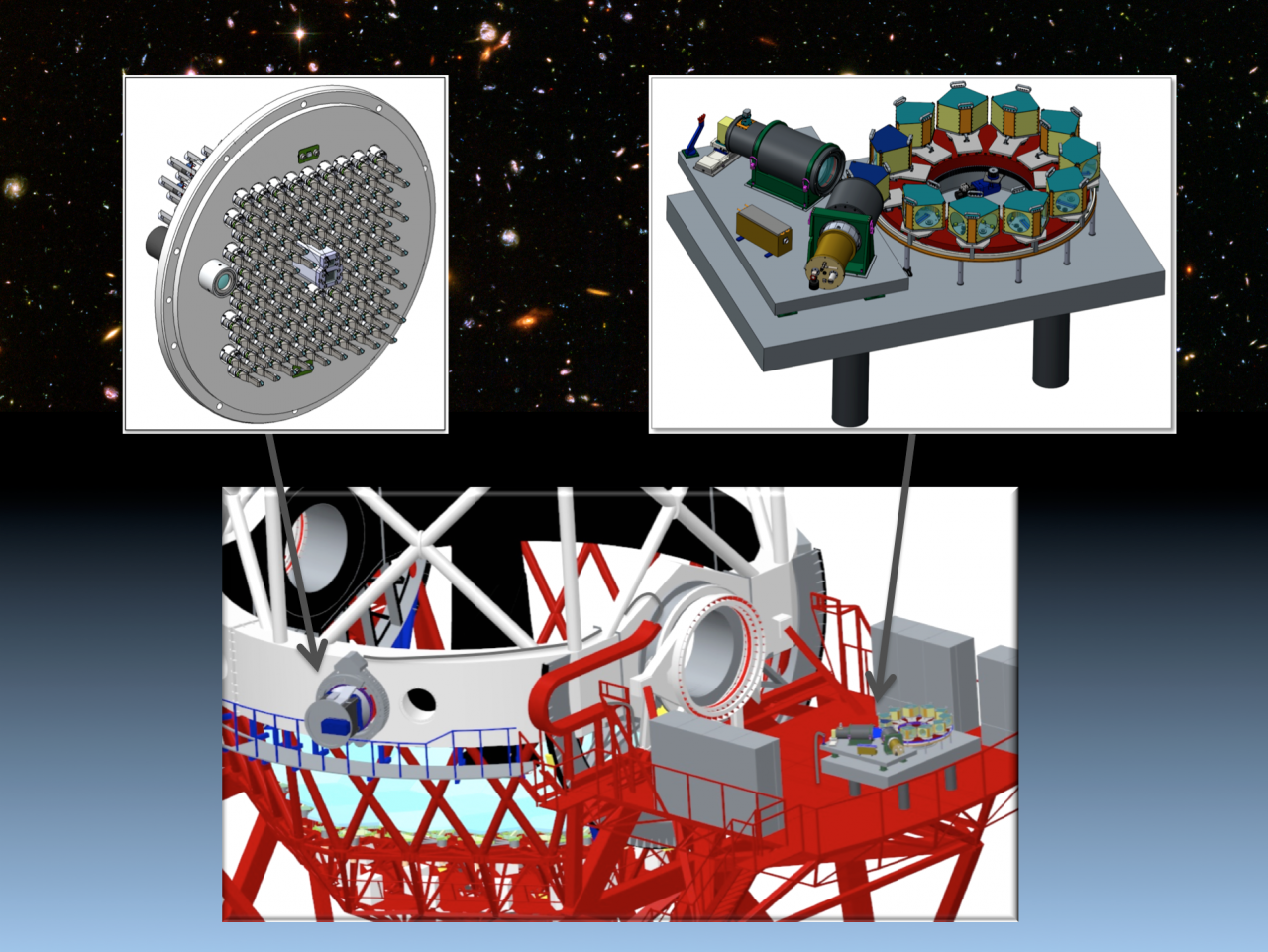The contract for the construction of MEGARA, the next optical instrument for the Gran Telescopio Canarias, is signed
MEGARA is the first spectrograph capable of observing the emission of the gas located in between distant galaxies
The Complutense University and the public company Gran Telescopio Canarias S.A. (GRANTECAN) sign the contract for the construction of the MEGARA instrument, the next optical instrument for the Gran Telescopio Canarias. The project is led by scientists of the Complutense University of Madrid and its construction will be carried out by a consortium of Spanish and Mexican institutions, including the Institute of Astrophysics of Andalusia (IAA-CSIC).
MEGARA (Multi-Espectrógrafo en GTC de Alta Resolución para Astronomía) will become the next optical instrument for the Gran Telescopio Canarias. MEGARA will employ the latest technology in optical fibers (essential to cover the firmament in a contiguous way) and dispersive elements, using the so-called Volume Phase Holographic gratings. The use of these technologies in a high spectral resolution instrument combined with the large collecting area of the Gran Telescopio CANARIAS (GTC) is unprecedented and will allow astronomers to tackle fundamental questions that are beyond the reach of current facilities.

Thus, MEGARA will be the first spectrograph capable of observing the emission coming from the gas filaments located in between distant galaxies by taking images of the Cosmic Web. To this purpose, it will examine empty areas in the firmament where up to now other instruments would only see noise. Besides, it will provide unprecedented details of the chemical composition and motions of individual stars and gas in our Galaxy and beyond the Milky Way.
"Until now we lacked of the tool to analyze with enough sensitivity the light from individual stars in external galaxies as well as to study the motions of stars and gas as they occurred as early as 10 billion years ago", points out Armando Gil de Paz, principal investigator of MEGARA, professor of the Physics Faculty of the Complutense University.
The Institute of Astrophysics of Andalusia (IAA-CSIC) is in charge of a part of the instrument control system: the development of a computer tool which will allow the spatial configuration of the optical fibers avoiding collisions between them.
